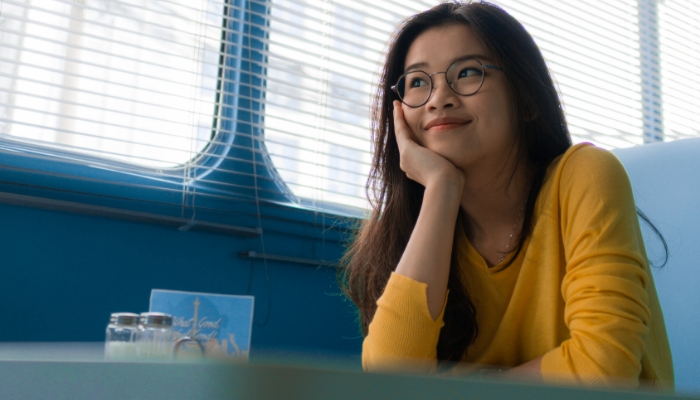-
An Eye-Tracking Study on Text Comprehension While Listening to Music: Preliminary Results
The aim of the present study was to examine the effect of background music on text comprehension using eye-tracking technology. Ten Greek undergraduate students read four texts under the following four reading conditions: preferred music, non-preferred music, café noise, and in silence. Eye movements were tracked to assess visual patterns, while reading performance and attitudes […] -
A Multisensor Dataset of South Asian Post-Graduate Students Working on Mental Rotation Tasks
Spatial thinking, in general, and mental rotation, in particular, have seen sustained research attention due to such abilities playing a critical role in STEM (science, technology, engineering and mathematics) learning. The recent development of sensor-based approaches to identify, understand, and measure cognition and affect opens up new possibilities to study such topics. We collected galvanic […] -
Neurophysiological Markers of Design-Induced Cognitive Changes: A Feasibility Study with Consumer-Grade Mobile EEG
Background: Evidence-based design aims to create healthy environments grounded in scientific data, yet the influence of spatial qualities on cognitive processes remains underexplored. Advances in neuroscience offer promising tools to address this gap while meeting both scientific and practical demands. Consumer-grade mobile EEG devices are increasingly used; however, their lack of transparency complicates output interpretation. […] -
Application of Instructional Technology Based on Biometric Identification and Artificial Intelligence Technology in Construction of Personalized Learning Paths
Current research on personalized learning paths based on artificial intelligence (AI) generally has black-box problems. It relies more on learning behavior data and lacks real-time monitoring of learners’ physiological states, leading to delayed personalized adjustments, lack of explainability of decision-making logic, and difficulty in gaining the trust of educators and learners. This paper integrates multimodal […] -
Implicit and Explicit Consumer Perceptions of Cashews: A Neuroscientific and Sensory Analysis Approach
This study investigated consumer perceptions of raw cashew nuts from two different private labels (private label A, PLA, and private label B, PLB), employing a combination of explicit (sensory analysis) and implicit (consumer neuroscience) methods. The objective was to analyse both conscious and unconscious responses to understand consumer preferences. Participants (n = 80) evaluated the […] -
How Children With and Without Developmental Language Disorder Use Prosody and Gestures to Process Phrasal Ambiguities
Prosody is crucial for resolving phrasal ambiguities. Recent research suggests that gestures can enhance this process, which may be especially useful for children with Developmental Language Disorder (DLD), who have impaired structural language. This study investigates how children with DLD use prosodic and gestural cues to interpret phrasal ambiguities. Catalan-speaking children with and without DLD […] -
Neural Correlates of Task-Specific Willingness to Communicate: Expanding the Research Agenda
Learners’ affective responses to pedagogic tasks and the effort that they invest in completing them are critical to the learning that takes place through tasks in task-based language teaching (TBLT) (Lambert, Aubrey, & Bui, 2023). Fluctuations in learners’ willingness to communicate (WTC) during pedagogic tasks-or task-specific WTC(Aubrey & Yashima, 2023)-are a locus for affective and […] -
Physiological measurement techniques in virtual tourism research: three caveats for future studies
Research on virtual tourism is receiving substantial scholarly attention. Existing studies on virtual tourism tend to apply self-report methods to assess user experiences, overlooking the potential of physiological measurement techniques. Empirical work in conceptually related areas, contends physiological methods have a demonstrated capacity to unearth unconscious mental processes, which can help mitigate potential cognitive biases […] -
What Is the Effect of Political Influencers on TikTok? Early Results From a Field Experiment With Young Adults
Politicians from both major political parties in the United States have been raising concerns about the rise of TikTok, a popular social media platform founded by Chinese entrepreneurs, with some calling for stricter regulation or even banning the platform. One aspect of opposition to TikTok is its growth as a news source among young adults. […] -
Decoding Fan Engagement: An Eye-Tracking Analysis of Attention Allocation on Sport Teams’ Facebook Pages
This study investigated how sport consumers allocate their attention on professional sport teams’ Facebook pages, with a focus on visual attention patterns, the impact of content type and topic, the role of fan identification, and differences in media behaviors between desktop computer and smartphone users. After creating a semifictitious sport team Facebook page as a […]
Research Report 2024
In-depth look at the scientific landscape as powered by iMotions software, showcasing groundbreaking research and the impact of our tools in various scientific and industrial fields.

iMotions Science Resources
Looking for white papers, validation reports or research show casing iMotions Multimodal capabilities?
Share Your Research

850+ universities worldwide with an iMotions human behavior lab
73 of the top 100 highest ranked universities
710+ published research papers using iMotions
iMotions is used for some of the most interesting human behavior research studies carried out by top researchers around the world. Contact us to have your publication featured here.
The authors of these publications have used iMotions as a software tool within their research.
“Software should be cited on the same basis as any other research product such as a paper or a book; that is, authors should cite the appropriate set of software products just as they cite the appropriate set of papers” (Katz et al., 2020).
We therefore encourage you to cite the use of iMotions where appropriate.
How to cite iMotions
APA
iMotions (10), iMotions A/S, Copenhagen, Denmark, (2024).
Note: adjust the version and year where relevant.
5 Most Popular Blogs
Publications
Read publications made possible with iMotions
Blog
Get inspired and learn more from our expert content writers
Newsletter
A monthly close up of latest product and research news


